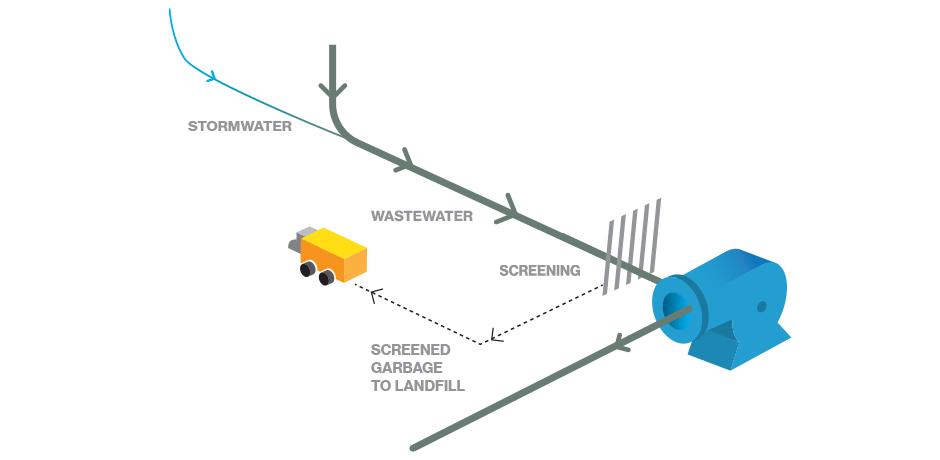Advanced Waste Water Treatment Solutions for Lasting Water Monitoring
Advanced Waste Water Treatment Solutions for Lasting Water Monitoring
Blog Article
Strategic Approaches to Enhance Waste Water Therapy Performance and Minimize Environmental Effect
In the realm of waste water treatment, the quest for boosted performance and lowered environmental impact is a perpetual challenge that requires tactical services. The integration of innovative therapy modern technologies, energy-efficient procedures, source recovery strategies, boosted nutrient removal strategies, and clever monitoring and control systems represents a complex structure for attending to these pushing issues.
Advanced Therapy Technologies
Innovative membrane layer filtration systems have reinvented advanced wastewater treatment procedures, significantly improving the elimination of contaminants. This technology has shown to be extremely effective in getting rid of a vast array of impurities, including drugs, hefty steels, and natural substances, which are commonly testing to get rid of with standard therapy approaches.
Additionally, membrane purification systems provide various benefits over traditional treatment strategies. Furthermore, these systems are highly functional and can be quickly integrated right into existing treatment plants or made use of as standalone units for decentralized applications.
Energy-Efficient Procedures
The combination of energy-efficient processes in wastewater therapy systems is critical for maximizing source usage and lowering functional costs. One essential technique to boosting power performance in wastewater treatment is the utilization of advanced aeration systems, such as fine bubble diffusers or surface aerators, which can enhance oxygen transfer performance and decrease energy intake.
In addition, optimizing process control and automation with the usage of innovative sensing units and keeping an eye on systems can improve total energy efficiency by changing procedures in real-time based on real need and conditions. Executing energy audits and regularly monitoring energy efficiency indications are crucial techniques to recognize locations for enhancement and track energy-saving efforts efficiently. In general, the adoption of energy-efficient procedures in wastewater therapy not only benefits the environment but also adds to lasting expense savings and operational sustainability.
Resource Recovery Strategies
With an emphasis on enhancing resource utilization and sustainability in wastewater therapy systems, the execution of source recuperation approaches arises as a crucial aspect in enhancing functional performance. Source healing approaches in wastewater therapy entail the identification and removal of useful sources from the waste stream, thus transforming what was when thought about waste right into a beneficial possession. By implementing source recovery strategies such as nutrient removal and recuperation, power generation from organic issue, and the production of reusable water, wastewater therapy plants can reduce ecological impact while optimizing effectiveness.

Boosted Nutrient Elimination Methods
Executing innovative nutrient removal strategies is necessary for optimizing the performance of wastewater treatment systems. One of the vital methods made use of for enhanced nutrient elimination is the process of organic nutrient removal (BNR), which entails the removal of nitrogen and phosphorus via biological procedures.

In addition to BNR, advanced therapy methods such as membrane bioreactors (MBRs) and created wetlands can additionally be employed to improve nutrient removal effectiveness. By including these sophisticated nutrient removal methods right into wastewater therapy industries, systems and municipalities can efficiently minimize nutrient pollution and shield the atmosphere.
Smart Surveillance and Control Systems
Utilizing advanced modern technology, the assimilation of smart tracking and control systems reinvents the operational efficiency of wastewater therapy centers. These systems integrate innovative sensors and data analytics to continuously keep track of crucial specifications such as pH Read Full Article degrees, turbidity, liquified oxygen, and circulation prices in real-time. By accumulating and examining this data, operators can gain valuable understandings into the performance of the treatment processes, making it possible for proactive adjustments to maximize therapy efficiency.
Smart tracking and control systems also support remote surveillance abilities, enabling operators to access real-time data and control functions from off-site places. This remote access boosts functional flexibility and responsiveness, allowing quick treatments in instance of system malfunctions or changes in influent high quality. The anticipating maintenance capabilities of these systems aid avoid tools failings and reduce downtime, inevitably improving the overall integrity of wastewater treatment operations.
Final Thought
In conclusion, tactical approaches such as innovative therapy innovations, energy-efficient procedures, source recuperation methods, enhanced nutrient elimination techniques, and smart tracking and control systems play an important role in boosting wastewater therapy performance and minimizing ecological effect. By executing these techniques, wastewater therapy plants can enhance their total efficiency, reduce energy consumption, recover important sources, and make sure conformity with ecological laws. These approaches are essential for efficient and sustainable wastewater website here administration methods.

In final thought, tactical approaches such as innovative therapy innovations, energy-efficient procedures, resource healing approaches, improved nutrient removal strategies, and wise tracking and control systems play a vital role in enhancing wastewater therapy effectiveness and minimizing environmental effect.
Report this page